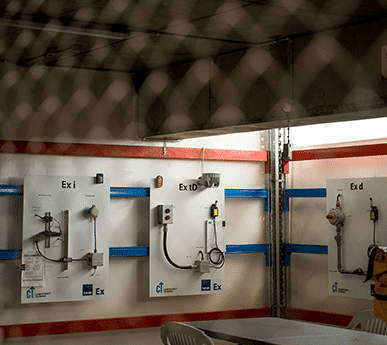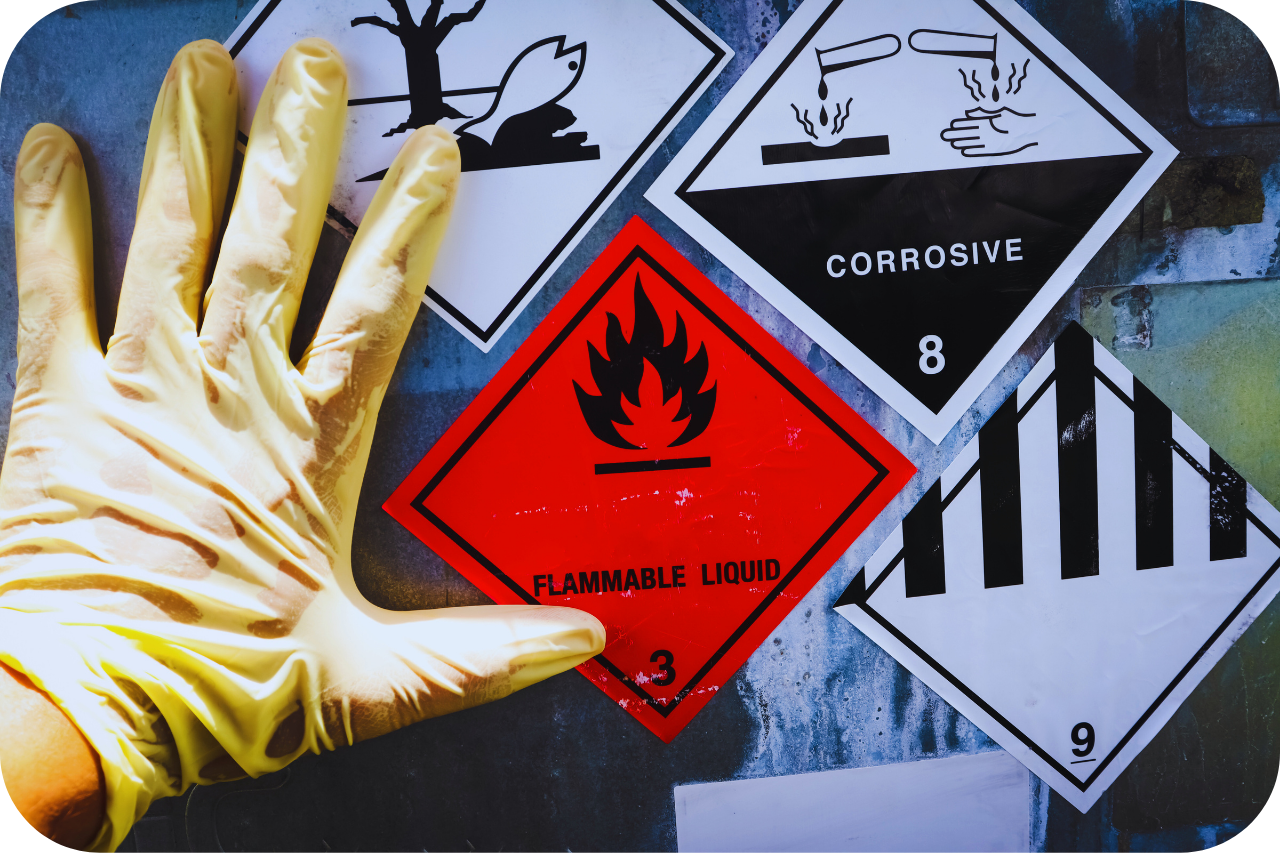Not known Incorrect Statements About Roar Solutions
Not known Incorrect Statements About Roar Solutions
Blog Article
Indicators on Roar Solutions You Should Know
Table of ContentsLittle Known Facts About Roar Solutions.Excitement About Roar SolutionsEverything about Roar Solutions
In such an environment a fire or explosion is possible when three standard problems are met. This is typically referred to as the "dangerous area" or "burning" triangular. In order to secure setups from a potential explosion an approach of evaluating and categorizing a possibly hazardous area is required. The purpose of this is to make certain the correct option and installation of equipment to inevitably protect against an explosion and to ensure safety of life.
(https://my.omsystem.com/members/roarsolutions)
No tools needs to be installed where the surface temperature of the tools is higher than the ignition temperature of the given risk. Below are some typical dust dangerous and their minimum ignition temperature level. Coal Dust 380C 225C Polythene 420C (melts) Methyl Cellulose 420C 320C Starch 460C 435C Flour 490C 340C Sugar 490C 460C Grain Dust 510C 300C Phenolic Resin 530C > 450C Aluminium 590C > 450C PVC 700C > 450C Soot 810C 570C The possibility of the risk being existing in a concentration high enough to create an ignition will certainly differ from area to location.
Unsafe location electric tools possibly created for usage in higher ambient temperature levels. Field Fixing By Authorised Personnel: Complicated screening might not be called for nonetheless certain treatments may need to be adhered to in order for the tools to preserve its third celebration score. Each piece of tools with a hazardous ranking need to be assessed separately.
4 Easy Facts About Roar Solutions Shown
The tools register is an extensive data source of tools records that consists of a minimum set of areas to recognize each item's area, technological parameters, Ex-spouse classification, age, and environmental data. This details is important for tracking and handling the equipment efficiently within hazardous locations. On the other hand, for regular or RBI tasting evaluations, the grade will certainly be a combination of Thorough and Close inspections. The ratio of In-depth to Shut inspections will certainly be established by the Tools Danger, which is analyzed based on ignition danger (the possibility of a resource of ignition versus the probability of a flammable ambience )and the hazardous location category
( Zone 0, 1, or 2). This variation will also affect the resourcing needs for job prep work. Once Lots are specified, you can create tasting plans based on the sample dimension of each Great deal, which describes the variety of arbitrary tools products to be checked. To determine the needed example dimension, 2 aspects need to be evaluated: the size of the Lot and the classification of assessment, which indicates the degree of effort that need to be applied( decreased, typical, or raised )to the evaluation of the Great deal. By integrating the group of examination with the Whole lot size, you can then establish the appropriate rejection criteria for a sample, implying the permitted variety of faulty things found within that sample. For even more information on this procedure, please describe the Energy Institute Guidelines. The IEC 60079 Going Here conventional suggests that the maximum interval in between evaluations ought to not exceed three years. EEHA inspections will certainly additionally be carried out beyond RBI projects as part of set up upkeep and devices overhauls or repair services. These assessments can be credited towards the RBI example sizes within the affected Whole lots. EEHA assessments are carried out to identify mistakes in electric devices. A weighted scoring system is essential, as a solitary tool may have numerous faults, each with varying levels of ignition risk. If the mixed score of both evaluations is much less than two times the fault rating, the Great deal is deemed appropriate. If the Great deal is still considered undesirable, it needs to undergo a complete evaluation or justification, which might trigger stricter inspection methods. Accepted Lot: The reasons for any kind of faults are recognized. If a typical failing mode is discovered, additional tools may need inspection and fixing. Faults are categorized by extent( Security, Stability, House cleaning ), ensuring that immediate issues are evaluated and resolved quickly to alleviate any effect on safety or operations. The EEHA database need to track and record the lifecycle of faults in addition to the rehabilitative activities taken. Implementing a durable Risk-Based Inspection( RBI )technique is crucial for guaranteeing conformity and security in taking care of Electric Tools in Hazardous Locations( EEHA) (high voltage courses). Automated Fault Scoring and Lifecycle Management: Effortlessly handle faults and track their lifecycle to enhance examination precision. The intro of this assistance for risk-based inspection further strengthens Inspectivity's position as a best-in-class service for regulatory compliance, as well as for any type of asset-centric assessment usage case. If you are interested in discovering more, we invite you to ask for a demo and uncover just how our remedy can transform your EEHA administration processes.
Roar Solutions Can Be Fun For Anyone

In terms of explosive threat, an unsafe location is an atmosphere in which an eruptive atmosphere is present (or may be expected to be present) in quantities that need unique precautions for the building and construction, setup and use equipment. high voltage courses. In this short article we explore the difficulties dealt with in the workplace, the threat control steps, and the called for proficiencies to function safely
It issues of contemporary life that we manufacture, save or deal with a variety of gases or fluids that are considered combustible, and a series of dirts that are regarded flammable. These substances can, in specific problems, form eruptive environments and these can have major and unfortunate repercussions. The majority of us know with the fire triangle eliminate any type of among the three aspects and the fire can not occur, however what does this mean in the context of hazardous areas? When damaging this down into its simplest terms it is basically: a mix of a particular amount of release or leakage of a certain substance or material, combining with ambient oxygen, and the existence of a resource of ignition.
In most instances, we can do little regarding the degrees of oxygen in the air, yet we can have considerable impact on resources of ignition, for example electric tools. Hazardous areas are recorded on the dangerous area category illustration and are identified on-site by the triangular "EX" indicator. Here, among various other essential info, zones are divided into three kinds depending upon the threat, the possibility and period that an explosive ambience will exist; Zone 0 or 20 is regarded one of the most harmful and Zone 2 or 22 is regarded the least.
Report this page